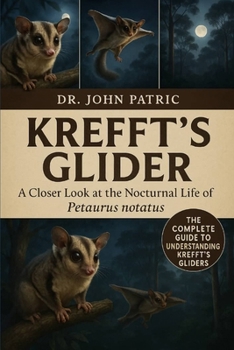Krefft's Glider: "A Closer Look at the Nocturnal Life of Petaurus notatus"
"Meet the Krefft's Glider" covering introduction, history, and unique traits:
Meet the Krefft's Glider
Krefft's Glider (Petaurus notatus), also known as the Krefft's Sugar Glider, is a fascinating and lesser-known member of the gliding possum family native to Australia and parts of New Guinea.
These small marsupials are remarkable for their unique ability to glide between trees, a skill that allows them to navigate dense forests with agility and grace.
Named after the Australian zoologist Gerard Krefft, who made significant contributions to the study of Australian wildlife in the 19th century, Krefft's Glider is an important species both ecologically and culturally.
Introduction
Krefft's Glider belongs to the family Petauridae, which includes other gliding possums like the more widely known Sugar Glider (Petaurus breviceps).
Although similar in appearance to the Sugar Glider, Krefft's Glider is a distinct species with its own specific behaviors and adaptations.
Typically nocturnal and arboreal, these creatures spend most of their time in trees, resting during the day and becoming active at night.
History
The species was first described scientifically in the mid-1800s during a period of intense exploration and documentation of Australia's unique fauna.
Gerard Krefft, for whom the species is named, was among the pioneering naturalists who contributed to the early understanding of Australia's marsupials.
Over time, researchers have learned more about the glider's habitat preferences, social behaviors, and dietary needs.
Interestingly, advances in genetic studies have helped clarify the differences between Krefft's Glider and other closely related species, correcting past confusion due to their physical similarities.
Unique Traits
One of the most striking features of Krefft's Glider is its patagium-a thin, membrane-like skin flap stretching from the forelimbs to the hind limbs.
This membrane acts like a parachute, enabling the glider to leap and glide across considerable distances between trees, sometimes covering up to 50 meters in a single glide.
This adaptation not only helps avoid predators but also allows efficient travel in search of food.
Krefft's Gliders have large, expressive eyes adapted for their nocturnal lifestyle, providing excellent night vision.
Their tails are long and prehensile, aiding in balance and grasping branches during glides and climbs.
Unlike many other marsupials, these gliders are highly social animals, living in family groups and engaging in vocal communication that includes soft chattering and clicking sounds.
Another fascinating trait is their diet, which is omnivorous but heavily reliant on sap, nectar, and insects.
Their sharp teeth and specialized digestive systems enable them to extract nutrients efficiently from these sources.





